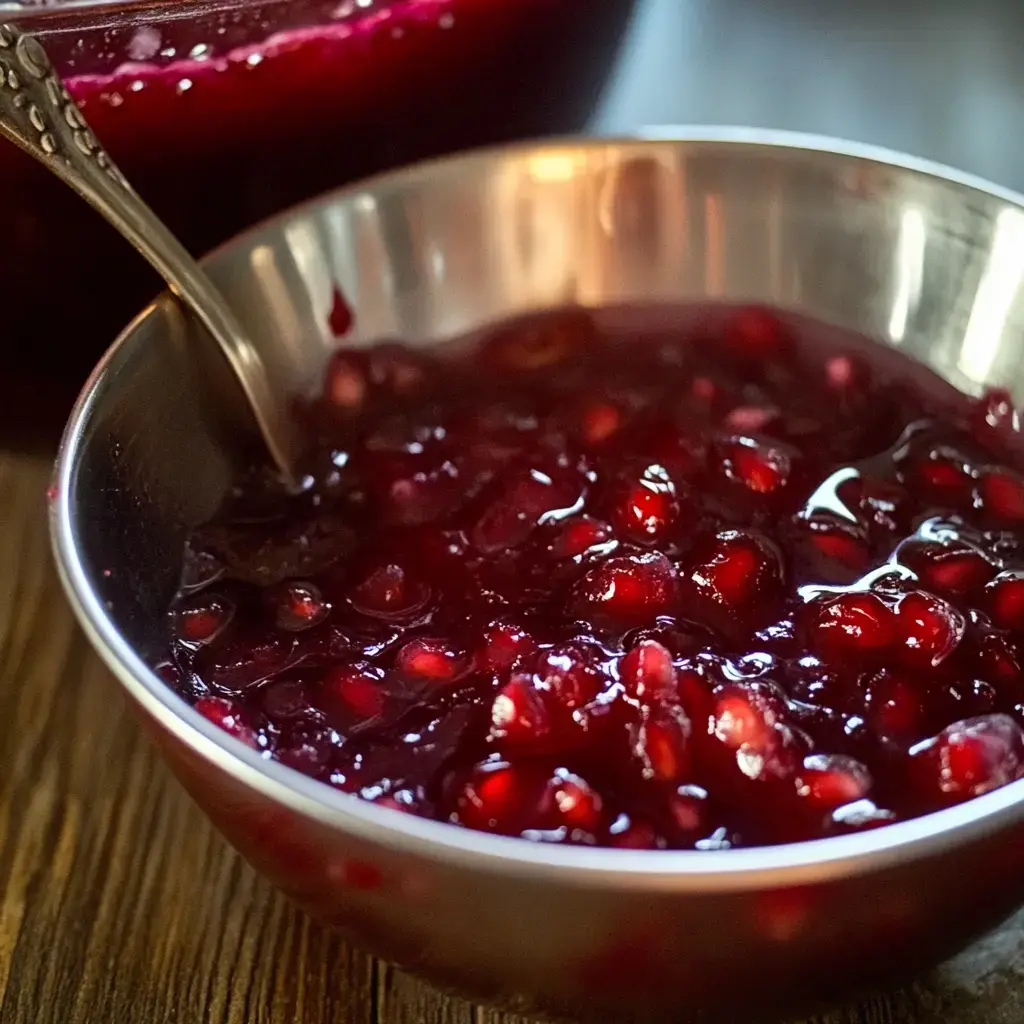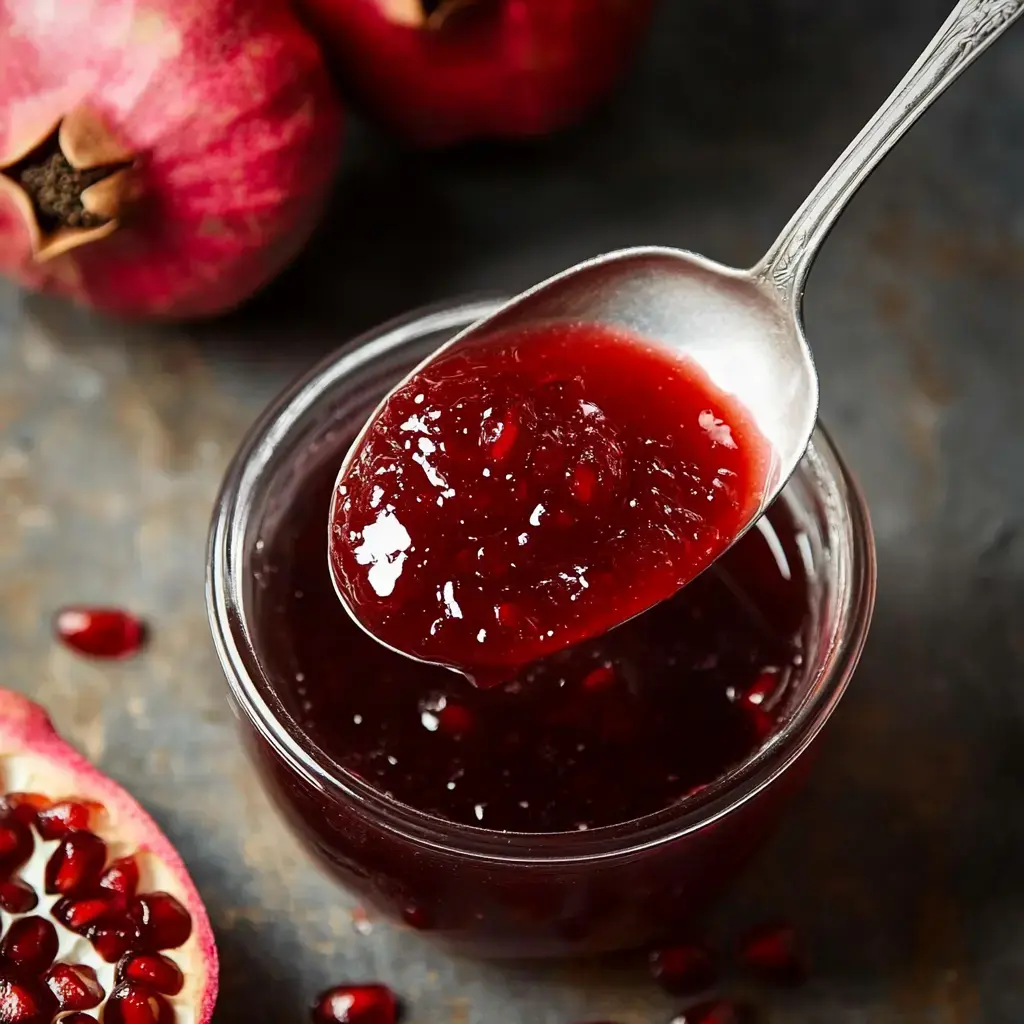 Pin it
Pin it
Nothing says summer quite like this crimson pomegranate jelly. Pull some fresh pomegranate juice together, sweeten just a little, and you’ll end up with a glowing jar full of just-right tart and sweet. My grandma first showed me how, and every year I whip up a batch when pomegranates pop up in the market.
Why You'll Love This Vibrant Pomegranate Jelly
This jelly shines for so many reasons. Dollop it on fluffy pancakes, swirl it through oatmeal, or slather it on roasted meats. All you’ll need are three regular things: pectin, sugar, and pomegranate juice. The juice is what brings that lively red and real taste. Making it at home blows away store versions. Grab poms when they’re on sale, make extra, and you’ve got a stash for months.
Ingredients
- Unsalted Butter: A tiny bit here helps stop weird bubbles when you’re cooking. Don’t mind skipping if you don’t have it.
- Pectin: Use basic powdered pectin from any shop. This one’s key for letting everything thicken up.
- White Sugar: Granulated sugar locks in the color and gives that glossy finish to your jelly.
- Pomegranate Juice: Make sure it’s pure and fresh for that bold fruity punch. Skip anything that’s watered down.
Instructions
- Last Step – Hot Water Bath:
- Lower the filled, sealed jars into a pot of boiling water so they’re covered. Keep them rolling for 10 minutes, then let the jars cool off outside the water.
- Fill Your Jars:
- Quickly ladle the hot jelly into your heated jars, leaving a smidge of space at the top edge. Wipe any drips away and press the lids on tight.
- Remove the Foam:
- Turn off the burner, then use a spoon to gently take off any foamy bits floating on top.
- Sugar Time:
- Once your pot’s bubbling, pour in all the sugar fast. Stir nonstop, get it boiling again, and keep it going for two and a half minutes exactly.
- Heat Up Your Jars:
- Let your clean jars sit in a pot of hot water for a few minutes. Take them out, ready for filling.
- Start the Cooking:
- Add juice, pectin, and a dab of butter into your big pan. Turn the stove to medium-high and mix as it heats up and gets lively.
- Prep the Juice:
- For fresh poms, blitz the seeds in a blender, then strain with cheesecloth so it’s nice and clear—no seeds or grit allowed.
- Wash and Dry Jars:
- Give four pint jars, plus lids and bands, a really good wash with hot soapy water. Let them air dry on your counter with a clean towel underneath.
 Pin it
Pin it
Homemade Pomegranate Jelly Joy
Cracking open your own pomegranate jelly always feels like a treat. It’s bright, wobbly, and packed with flavor—that store-bought stuff just can’t compare. My kids giggle as their toast jiggles, and I love that I know it’s made from scratch.
What Makes Great Jelly Work
Jelly is at its best when it’s clear and jiggly, holding together but not stiff. You want it smooth all the way, with not a chunk in sight. That’s what sets it apart from jam. Put it in a sunny window and watch it shine like a red jewel.
Simple Pectin Know-How
Pectin’s what does the trick for jelly. Since pomegranates hardly have any natural pectin, you gotta add some to help the jelly firm up fast. I just grab the usual kind from the store. No more long waits or overnight draining like my grandma had to do—half an hour, and it’s good.
Choosing Your Pomegranate Juice
Pick the best juice you can score. Freshly squeezed pomegranate is top-notch, but honestly, a good bottle of 100% pure pomegranate works fine too. Always peek at the label—make sure it’s got nothing extra, just the straight juice, and no sneaky sugars or extra fruits tossed in.
 Pin it
Pin it
Nailing That Jelly Texture
Getting jelly just right takes a little care and attention. Blend up your juice and pectin, warm it on the stove, then pour in the sugar. Let it really boil hard for two and a half minutes. If you like a firmer gel, tack on another minute. Swiping off the last bit of foam makes it look as pretty as it tastes.
Frequently Asked Questions
- → Why do I need pectin?
Pectin is what makes that nice firm texture—without it you'd just have runny syrup. Pomegranates don't have enough by themselves, so pick up some sure-jell. Go for powder, it stirs in better. Toss it in while your mix is super hot or you'll end up disappointed.
- → Is butter really needed?
Butter stops that foam layer from taking over your jelly. If you skip it (for a vegan batch), just skim foam off as it cooks. All you need is a tiny scoop—1/4 teaspoon. Some swap in coconut oil instead. If leaving it out, turn the heat down a tad to cut down on foam.
- → Can I use bottle juice?
Bottled juice is fine, just make sure it's pure pomegranate. Fresh tastes brighter but means more work. Don't reach for those sweet blends or cocktails. Use four cups for each batch. If squeezing your own, strain out those seeds real well.
- → How do I store it?
Keep your sealed jars somewhere cool and dark—they'll last a year. After opening, stash 'em in the fridge and use within three months. Check for mold every now and then. Clean the rims before closing. Give them a water bath to make them last even longer. Freezing? Skip it, jelly gets weird.
- → Jelly won't set - help!
Don’t panic! Boil it again with a little more pectin (try half a pack). Put some on a cold plate to check if it’s working. Sometimes it takes a bit more sugar to fix things up. Heat it to 220° for the magic to happen. Let it chill fully—setting can take a whole day or two.
Conclusion
Pomegranates are good for way more than just jelly. Stir them into sauces for savory dinners or use the juice to shake up drinks. Even a scoop of homemade sorbet brightens up dessert!
